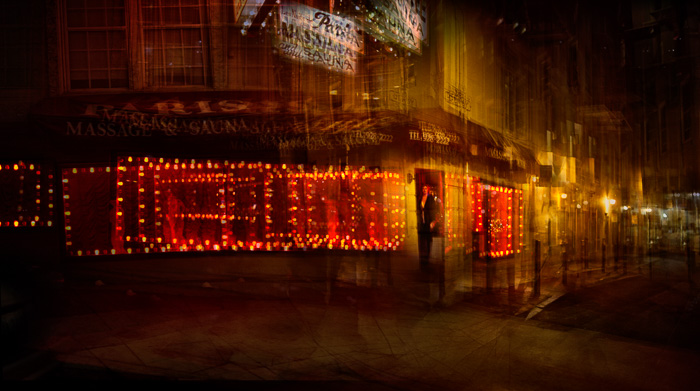Seven or eight years ago, the Nikon D3 came out, and it changed the way I looked at fast lenses. At first, I noticed that it made my fast telephotos, the 200mm f/2, the 400mm f/2.8, and the 200-400mm f/4 useful indoors, which had never been the case before.
Then I noticed that I was taking pictures where I never could before.
Finally, it dawned on me that I wasn’t using my fast wides through medium teles wide open any more, unless I wanted images with shallow depth of field or it was really dark. I thought to myself, “Are fast lenses necessary anymore?”
But Nikon continued to make fast lenses, and I continued to buy them. They were bigger, heavier, and more expensive than they would have been had they been slower, but, what with the size and weight of the Nikon bodies, having the option of low depth of field seemed to be a good tradeoff for the weight and bulk.
Then the Sony alpha 7 cameras came along. They were small. They were light. Sticking a 85mm f/1.4 or a 135mm f/2, or even a 70-200 f/2.8 on these cameras didn’t feel right, increased travel weight a lot, and, except in the rare situation where you wanted paper-thin DOF, achieved no purpose over what you could do with a slower lens.
Take yesterday’s mid-tele lens test. It would be an unusual circumstance that would make me stick an Otus 85 on an a7II. Even the 90mm ‘cron seems too big and heavy. The Zeiss 85mm Tele-Tessar is delightful on the camera, and provides nearly the same image quality at f/4 and narrower apertures. 95% of the time, it’s going to be the 85 on my a7x cameras.
It appears that Sony doesn’t see the situation entirely my way. They came out with the delightfully small 35mm f/2.8 Zony, but picked f/1.8 for the maximum opening on the 55 Zony. That actually didn’t hurt the weight that much. They sensibly came out with a 70-200 f/4 zoom, not an f/2.8 one. But they just announced a really big 35mm f/1.4 and a 28mm f/2. Their 90mm f/2.8 macro that was recently announced splits the difference between a really fast optic, and the 90mm f/4 one that I’d prefer.
It’s not that I want fast lenses to disappear. They have their place. It’s just that, in the full-frame mirrorless era, that place is shrinking.




tex andrews says
100% agreement.
Scott Greiff says
The 35mm f/2.8 on my A7 is a workhorse. I can shoot an entire event with just that lens. Then recently, I shot an event with the kit 28-70mm. I loved the versatility and didn’t miss f/2.8. Sony’s new lenses were created with the curmudgeons in mind.
david stock says
I agree about the diminished need for fast lenses. F4 is fine for most of what I do. This has pushed me in a slightly different direction in looking for a moderate telephoto, though. I just checked out an FE 70-200 f/4 in the store for the first time. From the specs, it seemed like it would be much too big and heavy. Plus I seldom use zooms. But actually this lens just feels right on an A7ii body. Good balance. Good range of focal lengths. And, it’s a pleasure to have autofocus/autostopdown. All things considered, it seems much more usable than my adapted Zeiss Contax 85/1.4. Hmmm.
–d
CarVac says
I find myself using fast apertures less and less often.
My Contax 85/2.8 is fast enough for me. I’ve never wanted the f/1.4 version, because it’s no better at the smaller apertures and is bigger and heavier. Heck, my 50/1.4 is heavier than I like.
Jean Pierre says
Jim, I agree. Hm, when I see what lenses for MFT are on the market. Fast lenses have already f1.8! Converted to FF is f1.2!
All lenses with 1.4 or less the construction is bigger for FF then APS-C or MFT! That is physical …
I am asking me: Do we need zoom-lenses for FF Mirrorless? No…
Then, wich focal length? Hm,… 24, 35, 50, 90 and 135?
Yes, these focal length were for analog photography! That is ok!
But, do we need these focal length in the digital photography?
Hm, No!
Why? Only for the DOF, of course not. Postprocessing we can blur the background easily.
So, which focal length I would see:
24 for landscape, 35 for everyday, 80 for portrait and 200 for sport etc. 3 lenses? Yes, that is enough. All lenses without OIS and all aperture f2.0 and 11 blades!
How we can persuade the manufacturer to do this? For Zeiss and Leica, we can write and explain. Or better go and visit them and speak with the product manger!
What do you think?